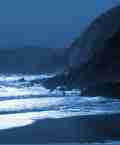 |
Search the site:

Walking Irelandís MountainsPaths and TracksVisiting hill walkers will be immediately aware of the lack of purposeful paths and tracks in most Irish mountainous areas, except in Northern Ireland. Paths there are, but they are not very common, usually the result of random boots or sheep hooves rather than conscious design, seldom signposted and rarely indicated on the maps. This means a much greater reliance on map and compass than would otherwise be the case. While this may be at first a little off-putting, it does offer a chance to experience a more challenging form of hill walking, one which in the long haul should prove more interesting than merely following a predetermined route.Ireland has a number of long-distance paths, only some of which are waymarked. While it is the intention to waymark them all eventually, several are indicated only on maps, while others are not even so marked. The long-distance walking authorities in the two jurisdictions regularly issue updated leaflets on all the paths. The long-distance paths cover all types of country; paths that traverse mountain areas are mentioned at the appropriate point in the text.
SafetyContinental visitors will be surprised by how remote and demanding Irish mountains that are only 500 metres high are. Both continental and British visitors will be surprised by the absence of other walkers and of paths. Irish mountains should therefore be treated with the respect due to continental mountains several times higher. These conditions demanad greater proficiency in the use of map and compass, and hill walkers should be aware that if an accident occurs it may be difficult to get help quickly. The absence of good maps in some areas of the Republic is another factor which hill walkers should keep in mind. It is therefore important that the following guidelines should be adhered to carefully.Donít walk alone. For more difficult walks, threee is the recommended minimum, and four better. Let someone know where you are going to be. Donít be over-ambitious. If you are inexperienced or unused to Irish mountain conditions, choose an easier route. Dress for the occasion. Boots with ankle support are highly desirable if not essential for all the one-day walks given in this book. Take a cagoule and make sure that you have sufficient warm, waterproof clothing as weather conditions can change rapidly and unexpectedly. Carry sufficient food, including a hot drink. Carry all your gear in a rucksack and, even taking into account the provisions you need, do not be weighed down with unnecessary gear. Take a map and compass and, most importantly, know how to use them. Donít carry on with the planned route if worsening weather or oncoming nightfall suggest a prudent retreat. If the worst comes to the worst and there is an accident, keep the patient warm and comfortable. [If there is no mobile telephone reception] note the exact position, leave someone with the patient and send a competent person for help. The mountain rescue may be alerted by ringing 999. In general, use a modicum of common sense, take reasonable precautions and then Ė without being overawed by the dangers Ėenjoy yourself.
|
[ Back to Top ]
All Material © 1999-2004 Irelandseye.com and contributors
